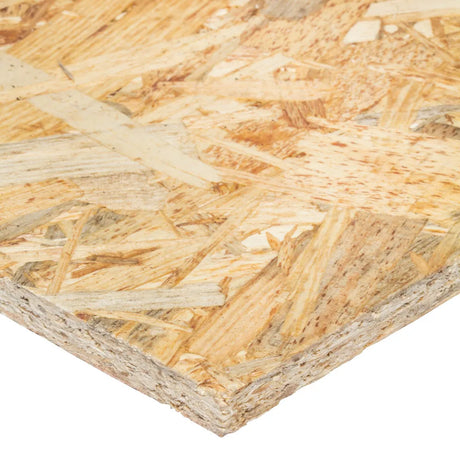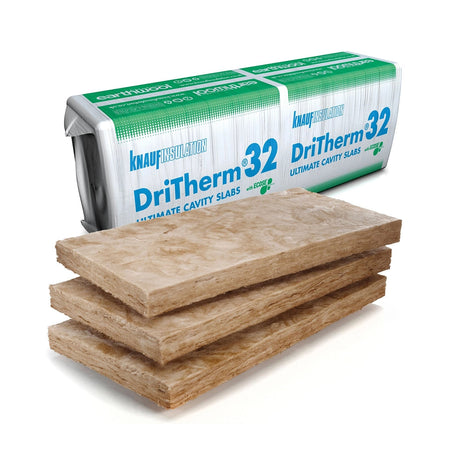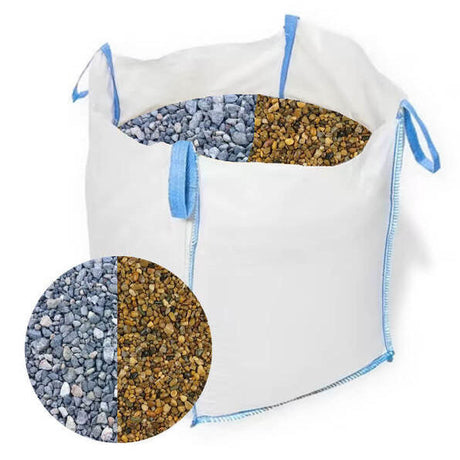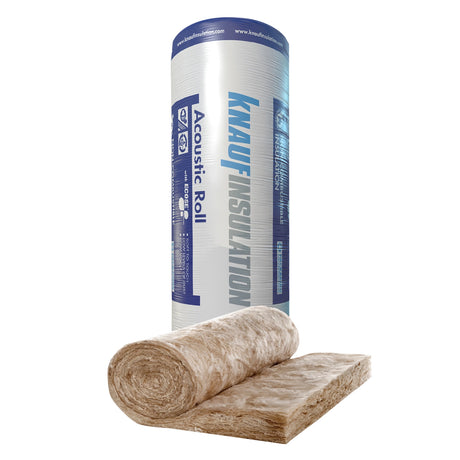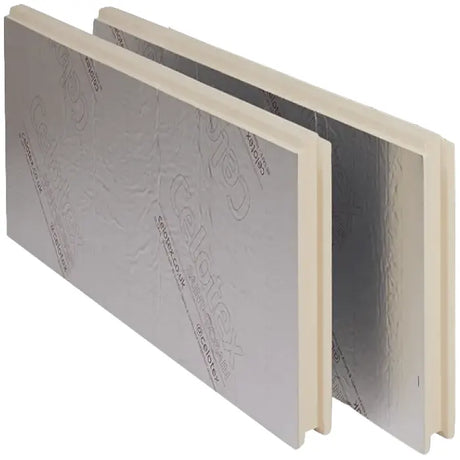How to Choose Between Mineral Wool and Fibreglass Insulation: A Complete Guide to Thermal, Acoustic, and Fire-Resistant Performance
When it comes to creating an energy-efficient, comfortable home that meets today's stringent building regulations, proper insulation isn't just an option—it's absolutely essential. Whether you're embarking on a major renovation project, building an extension, or simply looking to reduce those ever-increasing energy bills, the insulation you choose will determine your home's thermal performance for decades to come. With energy costs continuing to rise and environmental consciousness at an all-time high, making the right insulation choice has never been more crucial for UK homeowners and trade professionals alike.
In the world of insulation materials, two champions consistently emerge as the most popular and trusted solutions: mineral wool and fibreglass insulation. These materials dominate the UK market for good reason—both offer excellent thermal performance, proven track records, and the reliability that British builders have come to expect. However, whilst they may appear remarkably similar at first glance, their distinct properties, performance characteristics, and optimal applications can make the difference between a good project and an exceptional one.
At DIY Building Supplies, we've spent years helping customers navigate this crucial decision, and we understand that choosing between these two excellent options isn't always straightforward. The key lies in understanding how each material's unique strengths align with your specific project requirements, whether you're prioritising budget efficiency, acoustic performance, fire safety, or long-term durability. Let's explore these materials in detail to help you make an informed decision that will serve your project—and your budget—for years to come.
Understanding Mineral Wool Insulation: The Robust Performer
Mineral wool insulation represents one of the most sophisticated and versatile insulation solutions available to UK builders today. Manufactured from naturally occurring volcanic rock or industrial slag through an ingenious high-temperature spinning process, this remarkable material transforms raw earth into one of the most effective building materials known to modern construction. Leading UK suppliers like Rockwool and Superglass have perfected this process, creating products that consistently deliver exceptional performance across multiple criteria.
The manufacturing process itself is fascinating and speaks to the material's inherent robustness. Volcanic rock or blast furnace slag is heated to temperatures exceeding 1,500°C, then spun into fine fibres using centrifugal force—much like creating cotton candy, but with molten rock. These fibres are then bound together with organic resins and compressed into the familiar batts, rolls, and slabs that have become synonymous with professional-grade insulation. This process creates a material with a typical density ranging from 25kg/m³ to 200kg/m³, depending on the specific application requirements.
What sets mineral wool apart is its remarkable combination of properties that few other materials can match. The material's non-combustible nature means it can withstand temperatures up to 1,000°C without degrading, making it invaluable for fire protection applications. This isn't merely about meeting building regulations—it's about providing genuine peace of mind. The material's excellent acoustic properties stem from its dense, fibrous structure, which effectively absorbs sound waves across a broad frequency range, making it the preferred choice for party walls, media rooms, and any application where noise control is paramount.
Perhaps most importantly for UK applications, mineral wool demonstrates exceptional moisture resistance whilst maintaining breathability. Unlike some insulation materials that can lose performance when exposed to moisture, mineral wool's water-repellent properties ensure consistent thermal performance even in the challenging, damp conditions that characterise much of the British climate. This makes it particularly valuable for external wall applications, basement insulation, and anywhere moisture exposure is a concern.
Fibreglass Insulation: The Versatile All-Rounder
Fibreglass insulation has earned its place as Britain's most widely used loft insulation material through decades of reliable performance and exceptional value for money. Created from recycled glass that's melted and spun into incredibly fine fibres, this lightweight champion has revolutionised residential insulation since its introduction. Products like Knauf's Earthwool range have refined the fibreglass formula even further, incorporating bio-based binders that reduce formaldehyde emissions whilst maintaining the excellent thermal properties that made fibreglass famous.
The manufacturing process for fibreglass insulation demonstrates elegant simplicity combined with sophisticated engineering. Recycled glass—often comprising up to 80% of the raw material—is melted at temperatures around 1,450°C, then formed into fibres using either a spinning process similar to mineral wool or a blown process that creates different fibre characteristics. These fibres are then bonded with thermosetting resins and formed into the familiar yellow or white rolls and batts that have insulated millions of British homes.
Where fibreglass truly excels is in its exceptional thermal efficiency relative to cost and weight. With thermal conductivity values typically ranging from 0.032 to 0.040 W/mK, fibreglass insulation delivers outstanding thermal performance that easily meets and often exceeds UK Building Regulation requirements. This thermal efficiency, combined with its lightweight nature—typically 10-25kg/m³—makes it the ideal choice for loft applications where ease of installation and comprehensive coverage are priorities.
The material's flexibility and compressibility make it particularly user-friendly for DIY enthusiasts and professional installers alike. Fibreglass can be easily cut with a sharp knife, compressed to fit through narrow openings, then allowed to expand to fill cavities completely. This adaptability, combined with its cost-effectiveness for large areas, has made fibreglass the go-to choice for whole-house loft insulation projects across the UK.
Performance Comparison: Where Each Material Excels
Thermal Efficiency: Both Champions in Different Ways
When examining thermal performance, both mineral wool and fibreglass insulation deliver excellent results that comfortably exceed UK Building Regulation requirements. However, their approaches to thermal efficiency differ in ways that can influence your choice depending on specific project requirements. Fibreglass typically offers slightly superior thermal conductivity values, with the best products achieving figures as low as 0.032 W/mK compared to mineral wool's typical range of 0.035-0.040 W/mK. This translates to marginally better R-values per pound spent, making fibreglass particularly attractive for budget-conscious projects covering large areas.
However, mineral wool's thermal story extends beyond raw conductivity figures. Where mineral wool truly distinguishes itself is in its ability to maintain thermal performance under challenging conditions. Unlike fibreglass, which can temporarily lose efficiency when exposed to moisture, mineral wool's water-repellent properties ensure consistent performance regardless of environmental conditions. This resilience becomes particularly valuable in applications where moisture exposure is possible—cavity walls, basements, or areas with high humidity levels.
The practical implications of these differences become apparent in real-world applications. For a standard loft insulation project in a dry environment, fibreglass may offer better thermal performance per pound invested. However, for applications where long-term performance consistency is crucial—such as external wall insulation or areas prone to condensation—mineral wool's resilience often makes it the superior long-term investment despite higher initial costs.
Acoustic Performance: Mineral Wool Takes the Lead
Sound control represents one area where mineral wool demonstrates clear superiority over fibreglass insulation. The fundamental difference lies in density and fibre structure—mineral wool's denser composition and complex fibre arrangement create superior sound absorption characteristics across the frequency spectrum that matters most in residential applications. With noise reduction coefficients typically 20-30% higher than comparable fibreglass products, mineral wool has become the material of choice for professional acoustic applications.
This acoustic advantage becomes particularly pronounced in the mid to high-frequency ranges where most household noise occurs—voices, television, music, and traffic noise. Mineral wool's ability to absorb these frequencies makes it invaluable for party wall construction, home cinema rooms, and any application where noise control directly impacts quality of life. The material's performance is so reliable that many acoustic engineers specify mineral wool automatically for applications requiring serious sound control.
For most homeowners, this acoustic advantage translates into measurably quieter living spaces and better neighbour relations. Installing mineral wool in party walls can reduce sound transmission by 10-15 decibels compared to fibreglass—a difference that's immediately noticeable and genuinely improves daily comfort. This performance difference often justifies mineral wool's higher cost in applications where acoustic performance matters, making it an investment in long-term living quality rather than simply meeting building requirements.
Fire Resistance: Safety Where It Matters Most
Fire safety represents another area where material choice can have profound implications for building safety and insurance considerations. Both mineral wool and fibreglass are classified as non-combustible materials under UK building regulations, but their behaviour under extreme heat conditions differs significantly. Mineral wool maintains its structural integrity at temperatures up to 1,000°C, providing valuable time for evacuation and fire suppression whilst actively resisting flame spread.
Fibreglass, whilst also non-combustible, begins to soften and lose structural integrity at lower temperatures—typically around 400-600°C. This doesn't make fibreglass unsafe, but it does mean that mineral wool provides superior performance in applications where fire resistance is paramount. For this reason, mineral wool is often specified for fire-rated wall assemblies, escape routes, and areas where fire separation is crucial for building safety.
The practical implications extend beyond regulatory compliance to insurance and long-term building protection. Many commercial and high-risk residential applications specifically require mineral wool for its superior fire performance. Even in standard residential applications, the additional fire protection provided by mineral wool can offer valuable peace of mind and may contribute to more favourable insurance premiums for properties in high-risk areas.
Making the Right Choice: Application-Specific Recommendations
Budget-Friendly Loft Insulation: Fibreglass Takes the Crown
For straightforward loft insulation projects where thermal performance and cost-effectiveness are the primary concerns, fibreglass insulation—particularly products like Knauf Earthwool Loft Roll—represents the optimal choice for most UK homeowners. The combination of excellent thermal performance, ease of installation, and competitive pricing makes fibreglass unbeatable for covering large loft areas efficiently. With typical installation costs 20-30% lower than mineral wool equivalents, fibreglass allows homeowners to achieve comprehensive loft insulation without straining project budgets.
The lightweight nature of fibreglass becomes particularly advantageous in loft applications where access is limited and materials must be manhandled through narrow openings. Professional installers consistently report faster installation times with fibreglass, translating into lower labour costs for homeowners using trade professionals. For DIY enthusiasts, the material's forgiving nature and ease of cutting make it an ideal choice for weekend projects.
However, even when choosing fibreglass for loft applications, it's worth considering upgrading to premium products like Earthwool that offer enhanced performance characteristics. These products often incorporate bio-based binders that reduce formaldehyde emissions and provide better long-term stability, making them a worthwhile investment for health-conscious homeowners and projects requiring superior indoor air quality.
Acoustic Excellence: Mineral Wool's Domain
When sound control becomes a priority—whether for party walls, home cinema rooms, or properties near busy roads—mineral wool's superior acoustic properties make it the clear choice despite higher costs. The investment in mineral wool for acoustic applications typically pays dividends in improved quality of life and property value, particularly in urban areas where noise pollution significantly impacts daily comfort.
Products from manufacturers like Rockwool and Superglass have been specifically designed for acoustic applications, with some variants achieving noise reduction coefficients exceeding 1.0 across critical frequency ranges. These materials don't just meet building regulations for sound transmission—they exceed them substantially, creating genuinely quiet living spaces that enhance daily comfort and property desirability.
The acoustic benefits of mineral wool become particularly apparent in modern open-plan homes where sound control between different activity areas is crucial. Installing mineral wool in partition walls between living and sleeping areas, or between home offices and family spaces, can transform the functionality of modern homes whilst adding measurable value to the property.
Fire Safety Applications: Mineral Wool's Strength
For applications where fire safety is paramount—kitchen areas, garage conversions, escape routes, or properties in high-risk locations—mineral wool's superior fire resistance makes it the responsible choice. The material's ability to maintain structural integrity at extreme temperatures provides crucial additional time for evacuation whilst actively resisting fire spread, potentially making the difference between containable incidents and catastrophic losses.
Building regulations increasingly recognise these benefits, with some applications specifically requiring materials with mineral wool's fire performance characteristics. For property developers and landlords, choosing mineral wool for fire-critical applications can demonstrate due diligence and commitment to tenant safety, potentially influencing insurance premiums and regulatory approval processes.
Even in standard residential applications, the additional fire protection provided by mineral wool represents a valuable insurance policy against the unexpected. For homeowners in areas with limited fire service coverage or properties with challenging evacuation routes, the additional cost of mineral wool can be viewed as a sensible investment in family safety and property protection.
Professional Installation and Safety Considerations
Safe Handling Practices for Both Materials
Regardless of which insulation material you choose, proper safety equipment and handling procedures are essential for successful installation and personal protection. Both mineral wool and fibreglass can cause skin and respiratory irritation if proper precautions aren't taken, making appropriate personal protective equipment (PPE) non-negotiable for any installation project. Quality gloves, safety goggles, and dust masks represent the minimum protection required, whilst more extensive projects may warrant full protective suits and respirators.
Professional installers consistently report that mineral wool tends to be less irritating to handle than traditional fibreglass products, particularly newer formulations that have eliminated many of the microscopic particles that cause skin irritation. However, this doesn't eliminate the need for proper protection—both materials require careful handling to ensure installer safety and optimal installation results.
Proper workspace preparation becomes equally important for successful installation. Adequate ventilation prevents accumulation of airborne particles, whilst plastic sheeting protects surrounding areas from contamination. For DIY installers, taking time to prepare properly can mean the difference between a successful weekend project and a frustrating experience that requires professional remediation.
Installation Best Practices for Optimal Performance
The performance of any insulation material depends heavily on proper installation techniques that eliminate thermal bridging and ensure complete coverage. Both mineral wool and fibreglass require careful attention to fitting around obstacles, maintaining consistent thickness, and avoiding compression that can reduce thermal performance. However, their different handling characteristics require slightly different approaches to achieve optimal results.
Fibreglass installation benefits from gentle handling that preserves the material's loft and thermal performance. Over-compression should be avoided, as this can reduce thermal efficiency by up to 50% in extreme cases. The material should be cut slightly oversized to ensure complete coverage whilst avoiding excessive compression that compromises performance. Professional installers recommend using sharp knives and straight edges to achieve clean cuts that fit precisely without wasteful trimming.
Mineral wool's denser structure makes it more forgiving of minor compression whilst requiring more attention to proper support in wall applications. The material's ability to maintain performance when compressed makes it ideal for applications where perfect cavity sizing isn't achievable, whilst its structural integrity allows for easier handling around complex details and obstacles.
Conclusion: Making an Informed Decision for Your Project
The choice between mineral wool and fibreglass insulation ultimately depends on balancing your project's specific requirements against available budget and performance priorities. Both materials represent excellent solutions that will serve your property well for decades, but understanding their distinct strengths ensures you choose the option that best meets your particular needs.
For straightforward loft insulation projects where thermal performance and cost-effectiveness are paramount, fibreglass products like Knauf Earthwool provide unbeatable value whilst delivering thermal performance that exceeds building regulations. The material's ease of installation and proven track record make it the logical choice for budget-conscious homeowners seeking comprehensive thermal improvement.
However, for applications where acoustic performance, fire safety, or moisture resistance are priorities, mineral wool's superior characteristics often justify its higher initial cost through improved long-term performance and enhanced safety. Products from leading manufacturers like Rockwool and Superglass have proven their worth in demanding applications where performance consistency matters more than initial cost savings.
At DIY Building Supplies, we understand that every project is unique, and we're committed to helping you navigate these important decisions with confidence. Our technical team combines extensive practical experience with deep product knowledge to ensure you choose the optimal solution for your specific requirements, whether you're a trade professional managing multiple projects or a homeowner embarking on your first major renovation.
Ready to choose the perfect insulation for your project? Explore our comprehensive range of mineral wool and fibreglass insulation solutions, including premium products from Rockwool, Superglass, and Knauf. Our expert team is standing by to provide personalised advice and technical support to ensure your project's success. Visit our insulation collection today, or contact our technical specialists for guidance tailored to your specific requirements. Because when it comes to insulation, the right choice today creates comfort and savings for decades to come.



